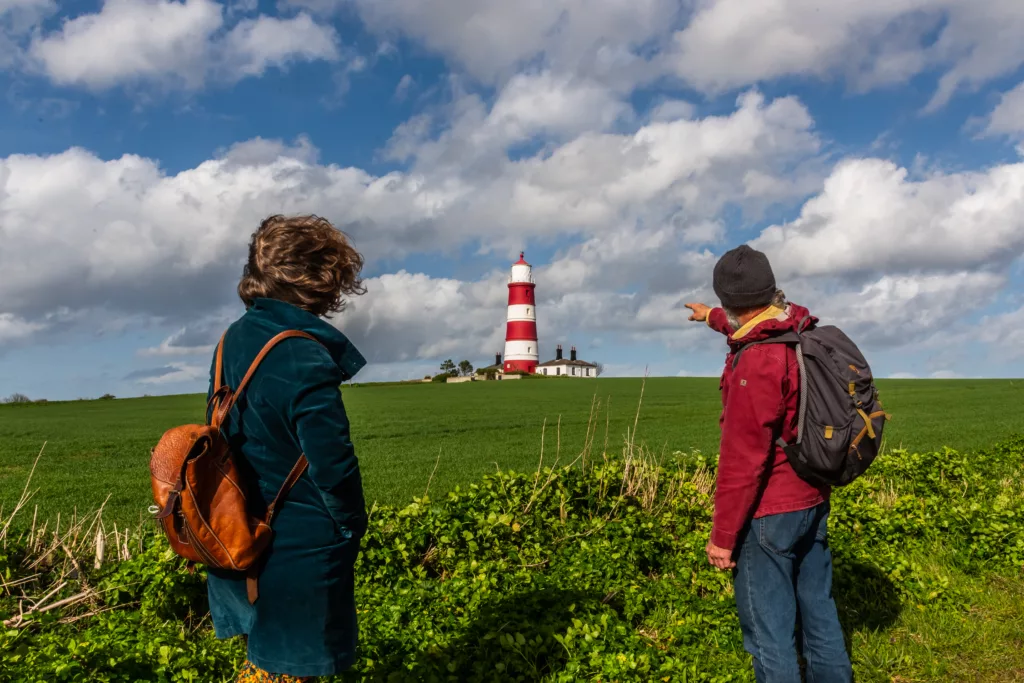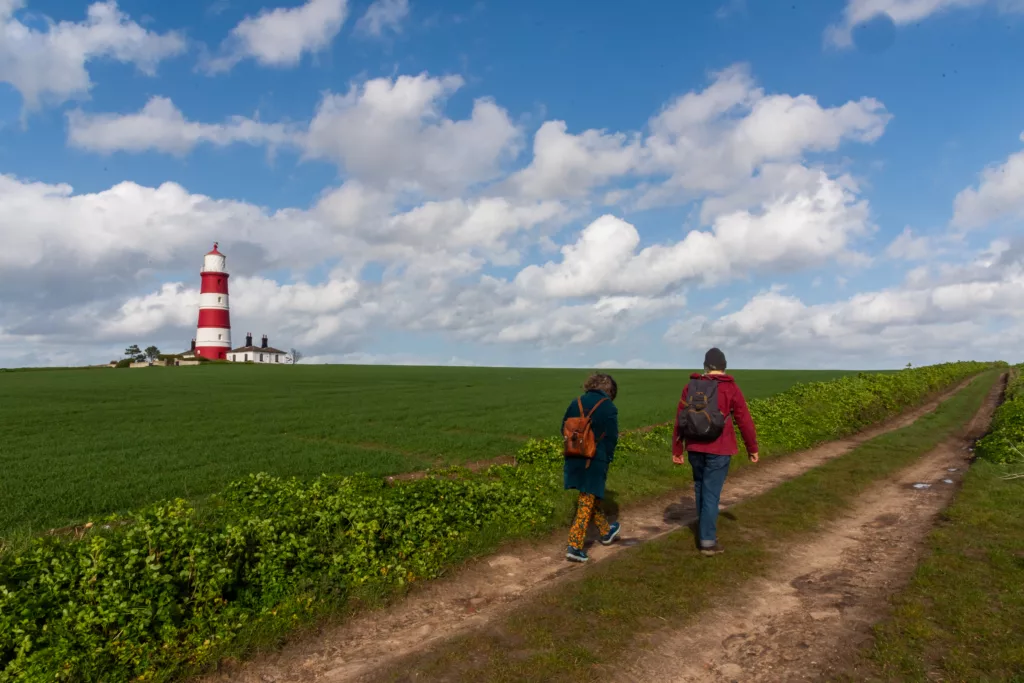On the east coast of Norfolk stands an enigmatic lighthouse. Facing the sunrise, it sits proudly on Happisburgh’s soft sandy cliffs where each morning the first rays of light catch the colourful facade, bathing its red and white stripes in the orange glow of a new day. This photogenic landmark was built in the wake of a terrible tragedy. In 1789 a terrible storm blew up. 70 sailing ships were wrecked in the crashing waters and 600 men lost their lives. The subsequent enquiry drew attention to the lack of warning lights between Cromer and Winterton so in 1791 two lighthouses were constructed. The ‘Low Light’ is now demolished but the ‘High Light’ is the distinctive tower that survives today. Once the ‘Low Light’ had gone, during daylight it was necessary to distinguish the Happisburgh lighthouse from the tower at Winterton and so three spectacular broad red bands were painted on the Happisburgh tower, just as you see today.
In 1987 Happisburgh Lighthouse was one of five lighthouses declared redundant with decommissioning scheduled for summer 1988. But local people were not going to allow their beloved lighthouse to be torn down! They mobilised and in 1990 a Private Bill was granted Royal making Happisburgh Britain’s only independently operated working lighthouse. It’s also the oldest working lighthouse in East Anglia, looked after by the Happisburgh Lighthouse Trust. It’s fascinating to look inside so if you can’t make one of the set open days, contact them to arrange a private visit.

